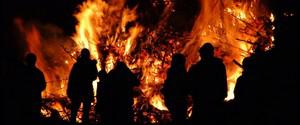WildfiresSimulating forest and fire dynamics to understand area burn of future wildfires
Climate change and wildfire – it’s a combustible mix with costly devastation and deadly consequences. With a goal of understanding the link between the two variables, researchers over the years have studied the effects of climate and wildfire interactions in the Sierra Nevada mountain range. That research has evolved into learning about the distribution of trees, the extent of forest cover and carbon dynamics.

Understanding wildfire behavior will aid in controlling them // Source: berkley.edu
Climate change and wildfire – it’s a combustible mix with costly devastation and deadly consequences. With a goal of understanding the link between the two variables, researchers over the years have studied the effects of climate and wildfire interactions in the Sierra Nevada mountain range. That research has evolved into learning about the distribution of trees, the extent of forest cover and carbon dynamics.
However, most previous studies have looked at the relationship between climate change and area burned by wildfire as a result of climatic influences on wildfire. Fire is a self-limiting process influenced by productivity. Yet, many fire projections assume sufficient vegetation to support fire, with substantial implications for carbon dynamics and emissions.
Climate influences vegetation directly and through climate-mediated disturbance processes, such as wildfire. Typically, the amount of area burned and temperature are positively associated based on the availability of vegetation to burn. The interaction with vegetation, which provides the fuel for the fire to burn, hasn’t been studied in depth.
UNM says that now, scientists, including Matthew Hurteau in the Department of Biology at The University of New Mexico, are examining more data via simulations of wildfires in the Sierra Nevada to improve their understanding between prior and future wildfires. They hypothesized that prior wildfires and their influence on vegetation, coupled with a changing climate and its influence on vegetation recovery after a wildfire, would likely restrict the size of wildfires in the future.
The research titled “Vegetation-fire feedback reduces projected area burned under climate change,” was published today in Scientific Reports, and was conducted to better understand the climate-wildfire interaction and how that impacts wildfire emissions, and subsequently, air quality in the Sierra Nevada mountain range.
